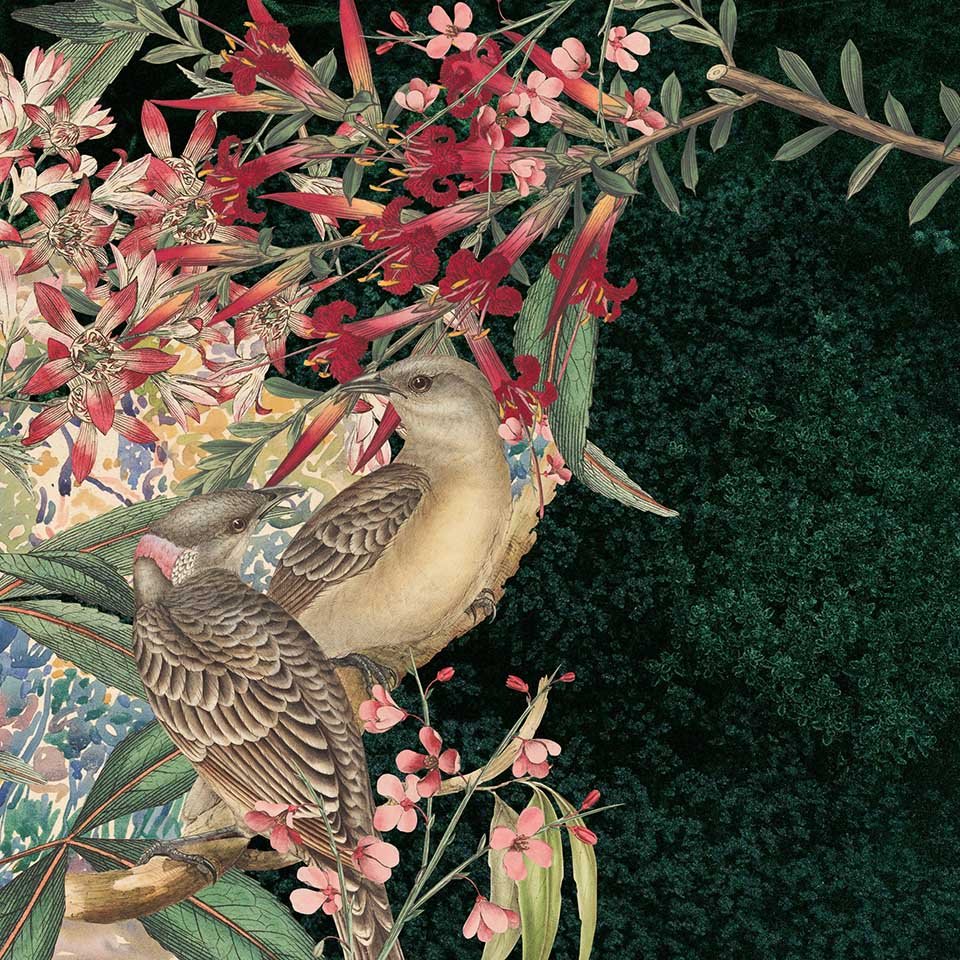Gracia Haby and Louise Jennison
Gracia Haby and Louise Jennison
(printed by Arten)
With wings outstretched and quivering 2021
archival pigment print; artist book; edition 1/2
Courtesy of the artists
Artist statement:
Empty the room. View it from the outside in. Brick by brick. Twig by twig. At the beginning: what is there?
If I were to construct a bower: where would I begin? What piece would I put where? What piece would I first arrange? Brick by brick, a dwelling. Twig by twig, a bower. It has existed long before me. It was made for shelter, in a pattern of houses that all look like each other. One house followed the other. Row by row. Suburb by suburb. A uniform carpet of homes, when viewed overhead, but with little gentleness for what it covered in the process. Muffled beneath the concrete slabs: do the thin threads of mycelium hold? I click the ‘Satellite’ thumbnail at the bottom of the map for a bird’s eye view. I lose myself in how small I am in all of this, and how little I feel I guide.
Zoom in.
Find a dent and burrow in.
In my bower, as it currently stands, rooms branch from a passageway, affording security, shelter, and sustenance. All that is needed. An above-ground echo of the snug, self-sustainment of Kafka’s below-ground burrow: ‘I have made the burrow habitable, and I think it has shaped up well’.1
1. Franz Kafka, ‘The Burrow’, The Complete Stories, ed. Nahum N. Glatzer, Shocken Books, New York, 1983, p. 325


